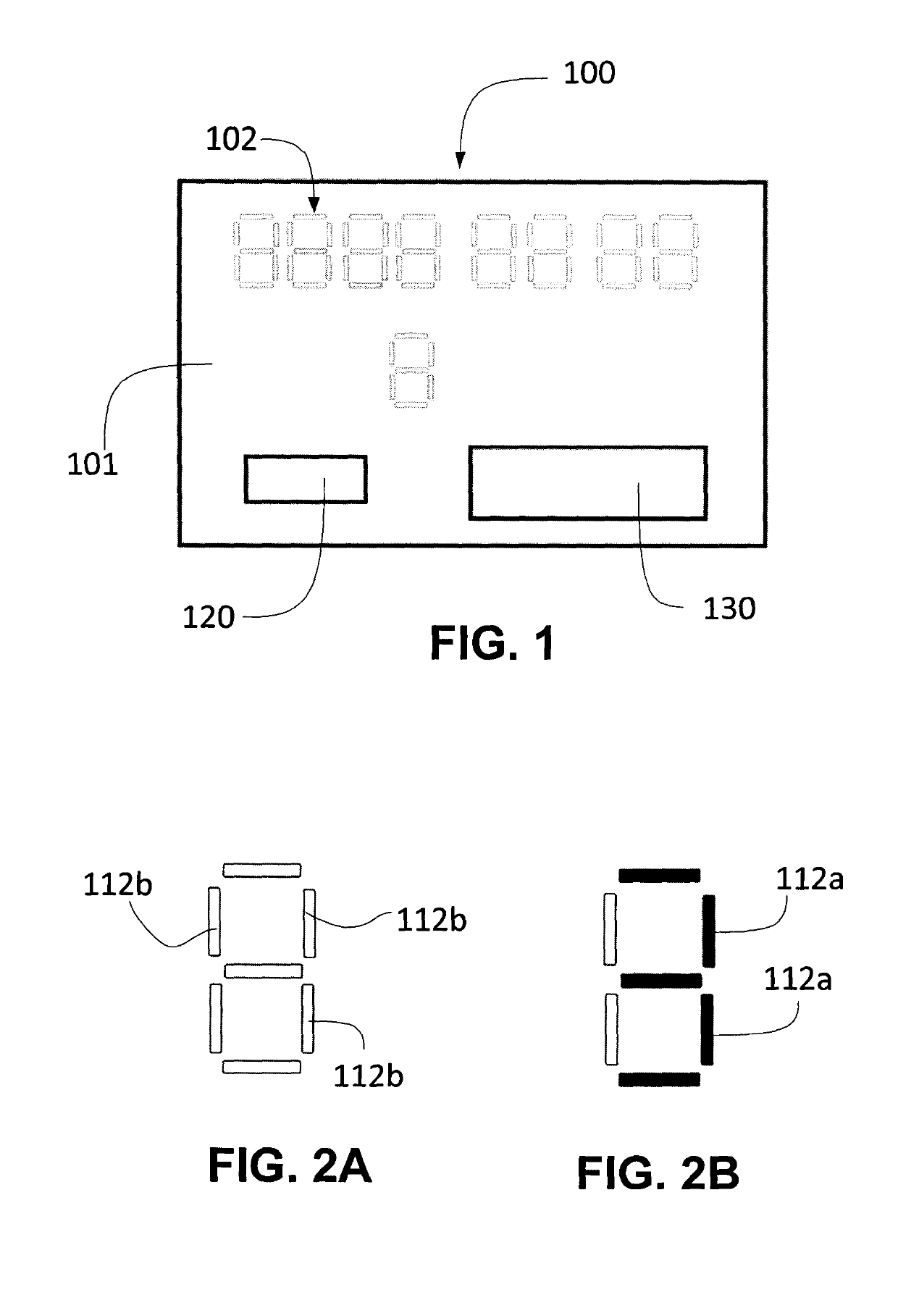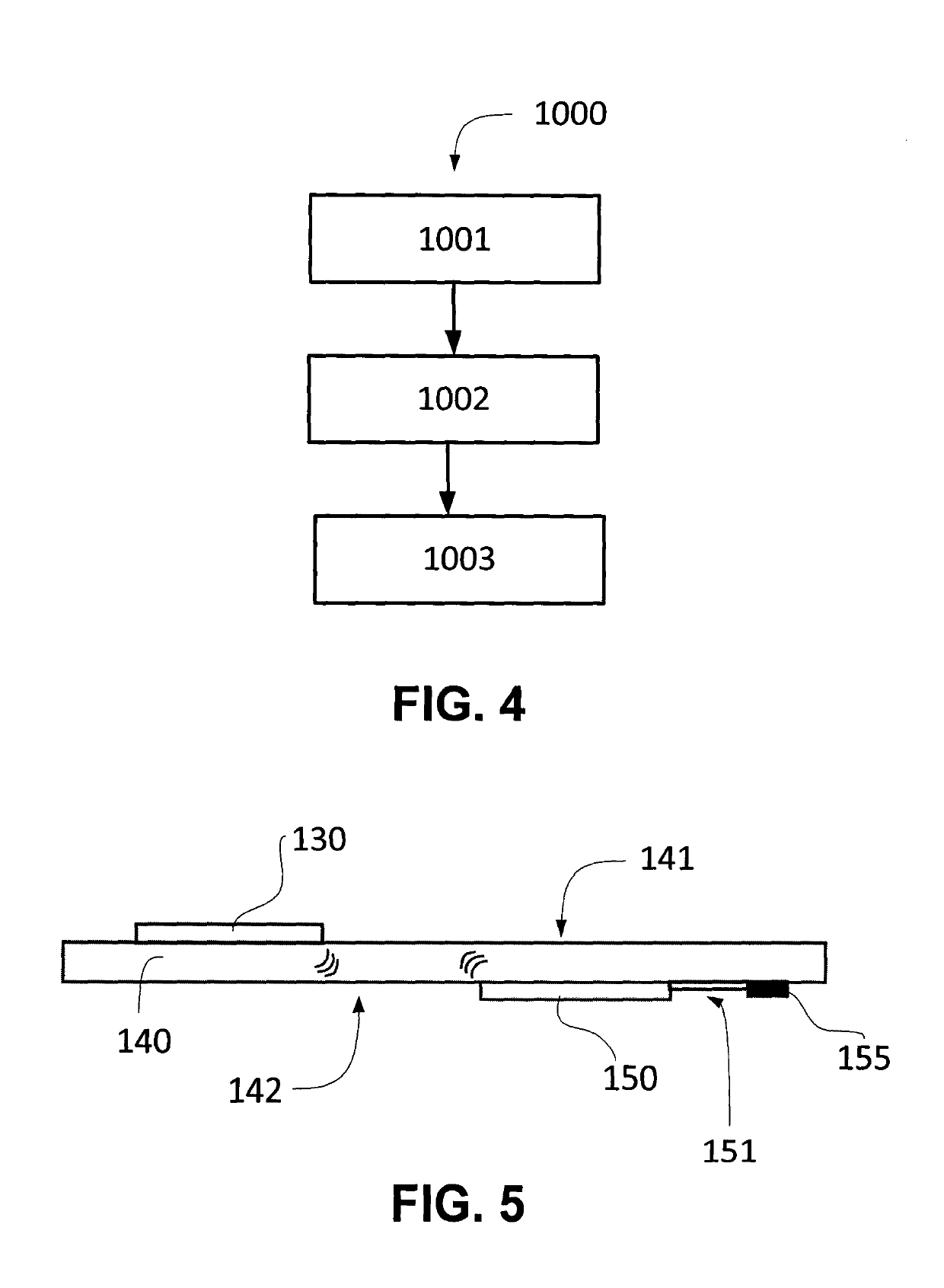Printed gas sensor and digital expiry date thereof
a gas sensor and digital expiry date technology, applied in the field of transponder-to-transponder communication, can solve the problems of increasing food waste, deterioration, and health hazards, and reducing the quality of food, so as to reduce the large amount of food waste, increase cost effectiveness, and ensure the effect of quality
- Summary
- Abstract
- Description
- Claims
- Application Information
AI Technical Summary
Benefits of technology
Problems solved by technology
Method used
Image
Examples
example 1 preparation
of Gas Sensing Metalloporphyrin Ink Component—Best Mode
[0077]The nanoporous silica MCM-41 with hexagonal pore structure and a pore size of 3.5 nm was purchased from GREEN STONE SWISS CO., LIMITED No. 106, Houdaixi Road, Xiamen, China in containers of 2×50 g for $148. All other chemicals were purchased from Ramidus AB. The iron porphyrin as-used is 5,10,15,20-Tetrakis (pentafluorophenyl)-21H, 23H-porphyrin iron (III) chloride [4] that was purchased from Sigma-Aldrich in a quantity of 100 mg. The iron porphyrin was dissolved in a total of 500 ml toluene split on two bottles with one bottle having a lower concentration iron porphyrin than the other. The metalloporphyrin was obtained as a black solution from Ramidus AB with a concentration of 233 microgram / mL. The active substance was prepared as a blend of toluene, iron porphyrin and nanoporous material MCM-41. A batch of paste of the metalloporphyrin solution and nanoporous silica was prepared in an aluminium foil container. Approxima...
example 2 preparation
of Gas Sensing Metalloporphyrin Ink Component—Bad Mode
[0079]The iron porphyrin 5,10,15,20-Tetrakis (pentafluorophenyl)-21H, 23H-porphyrin iron (III) chloride was used for preparing a sensing ink reactive to acetic acid. Experiments were performed in a clean room class 10 at room temperature. All liquids and MCM-41 powder were handled in a fume hood. An amount of 0.2 g of MCM-41 was weighed in a 20 mL glass bottle, three samples were made one of them also containing aluminum foil. An amount of 10 ml Porphyrin-toluene solution was added to the glass bottles. The solution was then roughly shaken in a mechanic shaker and then sonicated (with ultrasound) for 5 minutes at maximum effect. To get an even solution. An amount of 40 micro liter of MCM-porphyrin-toluene was added to 10×10 mm plastic square wells, six samples in total. The samples were left to dry in a fume hood, three were named 51, 52, 53. The samples were brown when dry. To the other 3 samples 40 ul more were added to the sam...
example 3
Concentration for Gas Sensing Ink
[0081]An amount of 0.2073 g MCM-41 was dissolved in 10 mL porphyrin-toluene mixture gives a concentration for MCM-41 of 20.73 mg / mL compared with earlier batches of 10 g MCM-41 per 500 ml of porphyrin-toluene conc MCM-41, 20 mg / mL. The new films (powder) becomes brown when dry and not green. The porphyrin concentration in more toluene was lowered but kept the same concentration of silica was giving a pale green print. The best mode for a gas sensing ink is in the range of 0.1 mg / mL-20 mg / mL. A more preferred range of concentration is 0.1 mg / mL-5 mg / mL. Furthermore, when aluminium foil was used hints of green could be seen but not otherwise.
PUM
| Property | Measurement | Unit |
|---|---|---|
| pore size | aaaaa | aaaaa |
| size | aaaaa | aaaaa |
| pore size | aaaaa | aaaaa |
Abstract
Description
Claims
Application Information
 Login to View More
Login to View More - R&D
- Intellectual Property
- Life Sciences
- Materials
- Tech Scout
- Unparalleled Data Quality
- Higher Quality Content
- 60% Fewer Hallucinations
Browse by: Latest US Patents, China's latest patents, Technical Efficacy Thesaurus, Application Domain, Technology Topic, Popular Technical Reports.
© 2025 PatSnap. All rights reserved.Legal|Privacy policy|Modern Slavery Act Transparency Statement|Sitemap|About US| Contact US: help@patsnap.com



